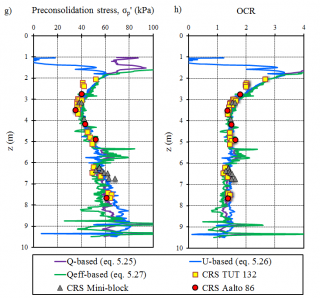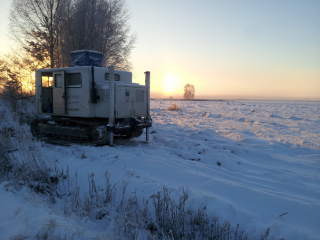Project overview
This study area develops field and laboratory investigation methods for studying the mechanical properties of soil. Knowledge of the mechanical properties of soil is an absolute prerequisite for the reliable and economical design and dimensioning of earth and foundation structures. The development of geotechnical investigation methods enables more reliable and faster determination of soil properties. This reduces construction risks and at the same time enables more precise design of structures.
Project background
In the design of earth and foundation structures, it is essential to be familiar with soil properties and their spatial variability. As a natural material, land differs in many ways from other structural materials. Its properties are not known in advance and they should be determined at the beginning of the construction project. The subsoil often consists of several different soil layers, and the variability of properties between these layers and even within a single soil layer can be considerable. Tighter schedules for construction projects have brought additional challenges to conducting ground investigations. However, mistakes made in ground surveys can cause large additional costs and delays for construction projects. Therefore, it is extremely important that the basic research methods are both accurate and sufficiently effective.
Phases of the project
 Our laboratory has long developed laboratory equipment for determining soil strength and deformation properties. In the FINCONE project, we have also set out to develop ground investigations in the field, focusing mainly on CPTU and field vane, as well as high-quality sampling. CPTU investigations can be used, for example, to determine the continuous depth profile for undrained shear strength. In addition, it can be used, for example, to reliably estimate the preconsolidation stress and deformation modulus in the overconsolidated range required in settlement calculations. Undisturbed sampling is again an absolute prerequisite for studying the strength and deformation properties of clay samples in the laboratory.
Our laboratory has long developed laboratory equipment for determining soil strength and deformation properties. In the FINCONE project, we have also set out to develop ground investigations in the field, focusing mainly on CPTU and field vane, as well as high-quality sampling. CPTU investigations can be used, for example, to determine the continuous depth profile for undrained shear strength. In addition, it can be used, for example, to reliably estimate the preconsolidation stress and deformation modulus in the overconsolidated range required in settlement calculations. Undisturbed sampling is again an absolute prerequisite for studying the strength and deformation properties of clay samples in the laboratory.


